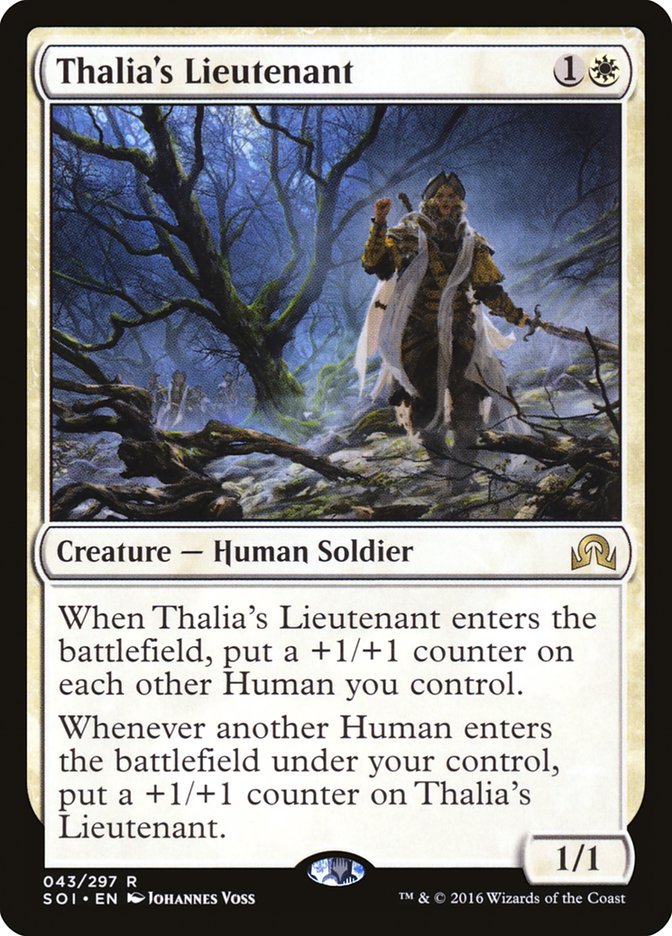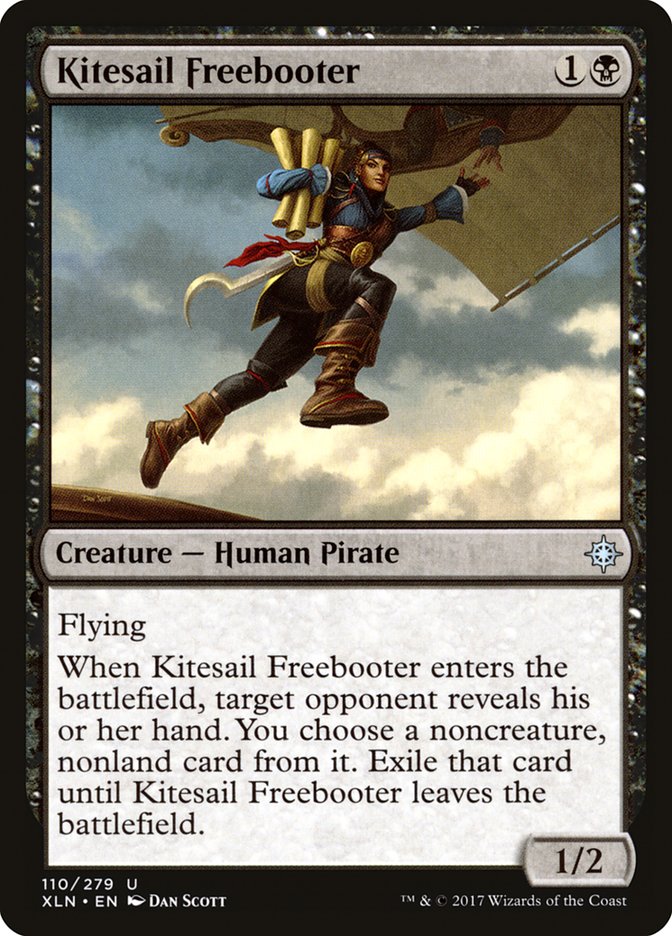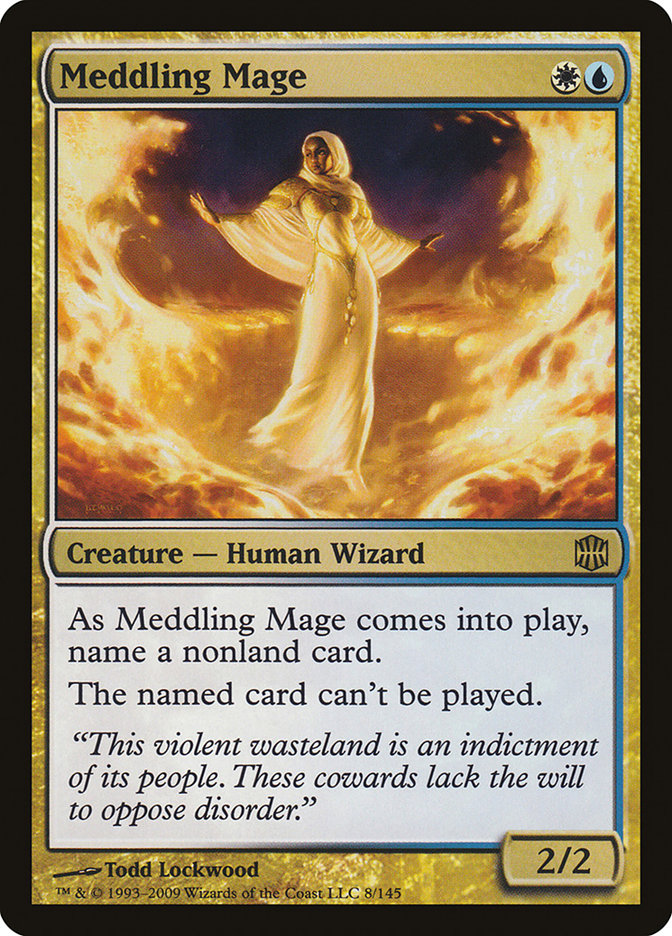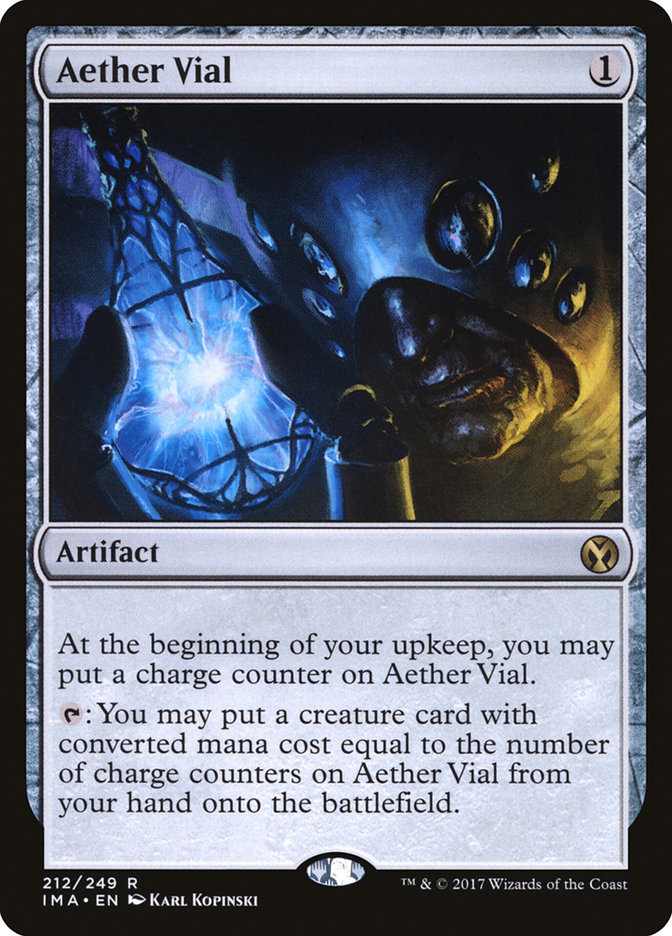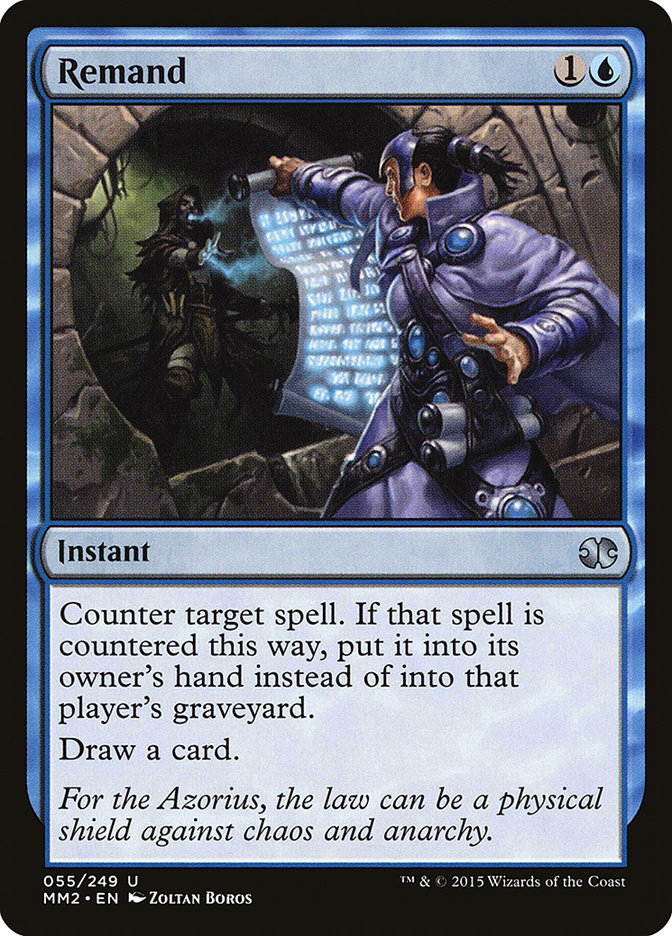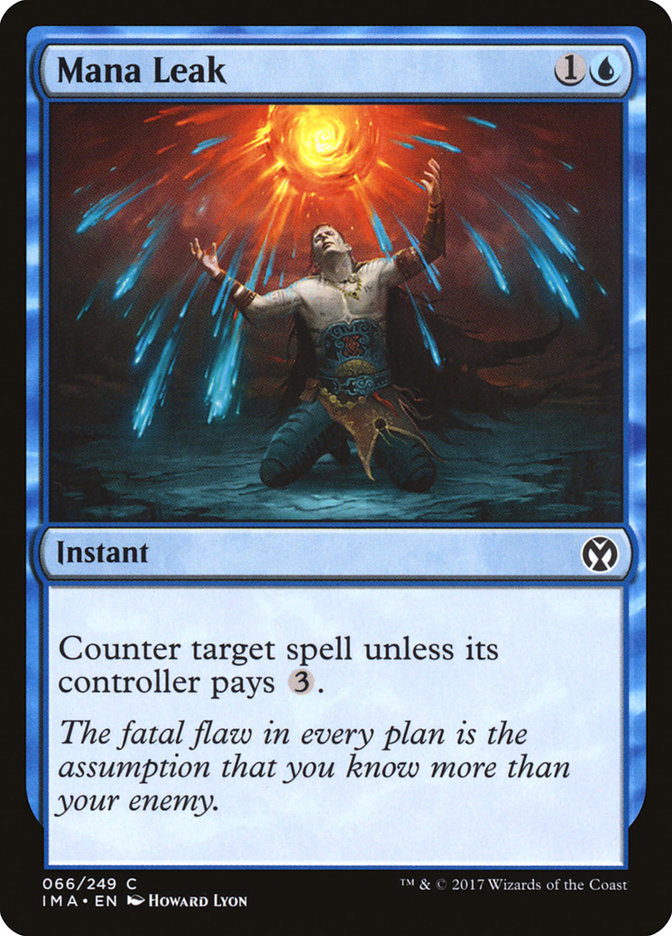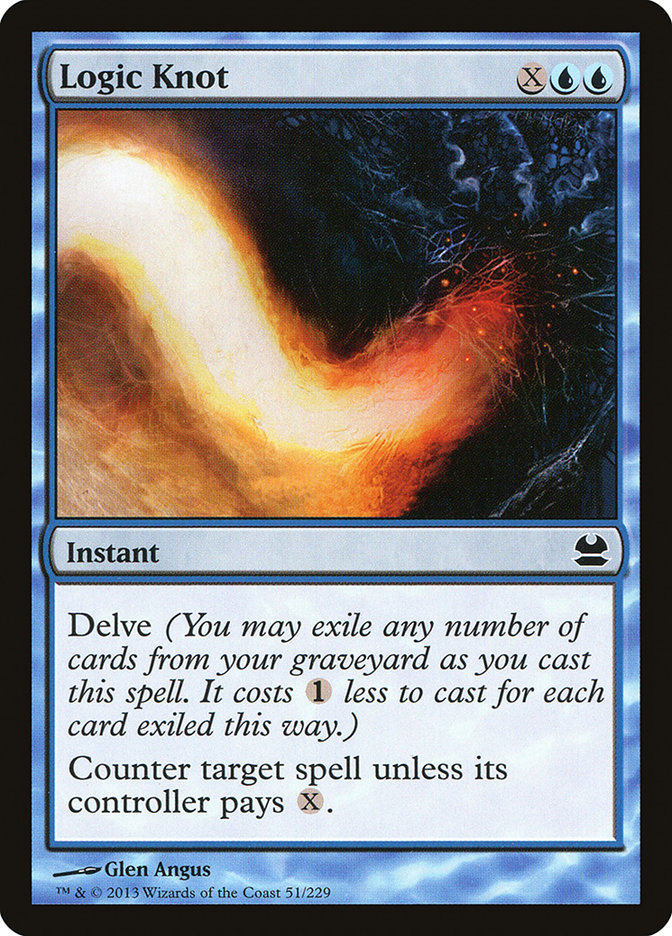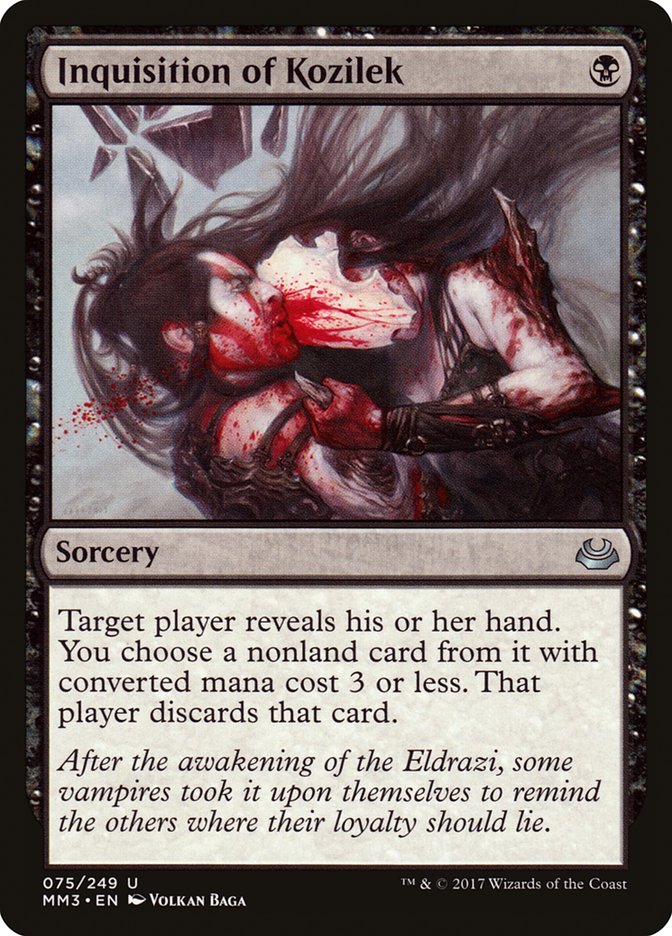Ever since Zan Syed took Bant Spirits to a Top 4 finish in the Team
Constructed Open in Worcester just a few weeks ago, it seems to be the deck
with the biggest spotlight on it. However, since that weekend, it hasn’t
gained much traction. Last week, I decided to play Bant Spirits through
The Gauntlet on the VS Series
where Todd Stevens put up five of the best decks in Modern, all in an
effort to see if this new iteration of Bant Spirits was the real deal. This
week, I’ll go over Bant Spirits with a fine-toothed comb, comparing it to
one of the most similar decks in Modern: Humans.
Is Bant Spirits better than Humans in Modern? Let’s find out!
Creatures (30)
- 1 Birds of Paradise
- 4 Noble Hierarch
- 2 Phantasmal Image
- 4 Drogskol Captain
- 4 Rattlechains
- 4 Spell Queller
- 3 Selfless Spirit
- 4 Mausoleum Wanderer
- 4 Supreme Phantom
Lands (22)
Spells (8)

Creatures (37)
- 4 Meddling Mage
- 4 Noble Hierarch
- 4 Phantasmal Image
- 4 Champion of the Parish
- 3 Thalia, Guardian of Thraben
- 4 Mantis Rider
- 3 Reflector Mage
- 4 Thalia's Lieutenant
- 4 Kitesail Freebooter
- 3 Militia Bugler
Lands (19)
Spells (4)

Bant Spirits and Humans are similar decks in what they’re trying to
accomplish, but they go about doing them in significantly different ways.
Sure, both have “lord” effects, disruption, and an aggressive play pattern,
but each has different strengths and weaknesses to exploit. In essence,
they’re different decks, but they’re both playing on a similar wavelength,
and as such, I think it’s important to identify which characteristics of
each deck are most appealing. After all, if both decks are filling the same
role in the Modern metagame, it’s only fair to break down the two to
determine which of these is the best at doing that job. And while Bant
Spirits is the hot new thing, I think there are reasonable arguments for
Humans being the best iteration of the aggressive/disruption deck.
Play Patterns
The play patterns of these two decks are roughly the same: play some early
threats, start attacking, and then use your disruptive elements to keep
your opponent off their gameplan. Bant Spirits does this with Mausoleum
Wanderer, Spell Queller, and using protective creatures like Rattlechains
and Selfless Spirit to protect its more important threats. Humans, on the
other hand, has a much more aggressive plan with Champion of the Parish and
Thalia’s Lieutenant, making larger threats at a much lower cost. Following
up those small threats with the likes of Meddling Mage, Kitesail
Freebooter, and Thalia, Guardian of Thraben means you’re applying pressure
aggressively, and your disruptive elements are preemptive.
I think the biggest draw for Bant Spirits is that their creatures fly.
Having an entire army of disruption, lord effects, and protection that
flies over decks that gum up the ground is a big deal in Modern. At times,
it seems very easy to stall out decks like Humans with something as simple
as a Young Pyromancer. And while it won’t always be enough of a nuisance to
completely turn the tide against the onslaught of Humans’ creatures, it can
buy them enough time since it blocks nearly all their relevant creatures.
That also lets you focus your pinpoint removal on the likes of Mantis
Rider, or any other creature that might be able to fly over and deal the
last few points of damage. For Bant Spirits, cards or decks that gum up the
ground aren’t nearly as relevant.
But the biggest difference between the two decks is this:
Before the inclusion of Supreme Phantom, Bant Spirits also played Reflector
Mage. After all, it is one of the better cards to copy with Phantasmal
Image, as well as one of the best hits off Collected Company. In a
creature-based matchup, or against a combo deck that relies on creatures,
Reflector Mage is certainly a nice card. But Bant Spirits has shied away
from Reflector Mage now that it has more Spirit-based synergy.
And while Bant Spirits has access to Path to Exile, it isn’t nearly as
aggressive as Reflector Mage. Giving your opponent a land is pretty bad in
Modern, and especially so if you have to cast it early. However, Path to
Exile is a tried and true removal spell in the format, so it’s a welcome
inclusion into the Bant Spirits archetype. I just wish Reflector Mage was
still in the deck to give their copies of Collected Company a bit more
kick. But it still can be! These iterations of Bant Spirits we’ve seen
recently are only scratching the surface. The archetype is fairly new in
Modern and having more people with eyes on it means it will get better in
the coming months. Maybe Reflector Mage should make a comeback? Perhaps
Geist of Saint Traft should be seeing more maindeck play? We’ll see.
Verdict:
Flying is great, but Reflector Mage and a more aggressive strategy is more
important.
Playing at Instant VS Sorcery Speed
One of the bigger draws for Spirits is that you’re playing mostly at
instant speed. Aside from Noble Hierarch and some other early threats,
Rattlechains lets you cast most of your creatures at instant speed. And
with Collected Company being your big top-end, as well as many of your
creatures naturally having flash, it’s possible to never tap mana on your
own turn after casting an early Rattlechains. That’s a pretty sweet aspect
of the deck that gets overlooked, as playing at instant speed means combo
decks never truly know what to play around and will often walk into your
disruption or be forced to “go for it” in spite of the threat of your
disruption.
Spell Queller is one of the better cards in the deck, effectively
countering one of your opponent’s spells while adding to your beatdown
gameplan. And when the format is full of combo decks and lacking on
removal, Spell Queller is one of the better creatures Modern has to offer.
Disruption tied to a creature with a decent body, and especially one with a
desirable creature type, is a boon. Without Spell Queller, I don’t think
there’d be enough reason to actually play the deck.
It’s that important!
On the other side of the coin, playing out creatures at sorcery speed is
clunky, but the upside is that your threats are inherently more powerful.
Creatures with flash tend to be smaller compared to their initial mana
cost, so playing at sorcery speed means you’re getting a better rate for
your creatures. That also means your creatures need to be disruptive while
they’re sitting on the battlefield, as opposed to waiting in the wings to
steal an opposing card that’s on the stack.
Aether Vial kind of messed with this comparison, because it allows you to
play some of your threats at instant speed, but mostly it’s in the deck to
give you a significant mana advantage. When you play cards like Aether
Vial, that means you have a density of creatures on one, two, and three
mana, and Aether Vial will likely generate an effective six or more mana
over the course of the game. In a deck like Humans, you’re much more
interested in the mana generation than playing creatures at instant speed,
but that doesn’t mean that playing creatures at instant speed has no
inherent advantage in the Humans strategy.
All these creatures are great at instant speed. Kitesail Freebooter during
your opponent’s draw step. Thalia’s Lieutenant during combat after blockers
are declared. Meddling Mage mid-combo. Champion of the Parish already on
the battlefield? Any creature entering the battlefield at instant speed is
a big deal. But that’s not the focal point of the deck, nor is it the main
importance of having Aether Vial in your deck.
Verdict:
Playing at instant speed is better than sorcery speed, even with a
reduction in overall power.
Aether Vial VS Collected Company
Aside from the occasional Humans brew from Gerry Thompson featuring
Collected Company, the majority of Humans decks are more centered around
Aether Vial. Aether Vial, as we already discussed, gives you huge bursts of
mana with draws that would otherwise be stifled. Playing two or three extra
creatures by the fourth turn is a big deal when you’re curving out, and you
really start to see the damage pile up over time.
On the other hand, Collected Company is one of the best Modern cards
printed over the last few years, and has seen play in a number of
archetypes across the format. It gives decks that play a plethora of two
and three mana creatures a big spell to top out on and gives you more
virtual copies of every creature in your deck. And in most of the
strategies that play Collected Company, hitting any two creatures that
aren’t Noble Hierarch and/or Birds of Paradise means you’re pushing
yourself pretty far ahead. And when Collected Company hits two disruptive
creatures against combo or two lord effects against removal-light
strategies, the game nearly ends on the spot. The cost here is that
Collected Company is inherently random, and you might not hit the creatures
you need to actually survive.
Aether Vial is much more about consistency than anything else. A Humans
draw that opens with Aether Vial will inherently be more powerful than a
draw that centers around Noble Hierarch or Champion of the Parish. Sure,
any of these three cards will lead to solid draws over the first few turns,
but Aether Vial means you get to play a completely different game. Horizon
Canopy will be cycled immediately, preventing loss due to flooding. You
won’t get stuck with a plethora of two and three mana creatures rotting in
your hand as you cast one spell per turn. The downside? Drawing two copies
of Aether Vial is actively bad, while drawing two copies of Collected
Company is extremely good (assuming you hit your fourth mana).
The downside of Collected Company is that occasionally it forces you to
build your deck in a certain way that would otherwise be less desirable
considering your average converted mana cost. Noble Hiearch dies? Good
chance that Collected Company won’t be cast anytime soon. Playing Collected
Company in your deck also means you don’t have any other real top-end, and
you need to play enough mana sources so that you can actually cast
Collected Company if you draw it. Not drawing Collected Company on time, or
not drawing enough mana to cast it, could put you in such a significant
hole that a later Collected Company might not be good enough.
In another vein, hitting the wrong set of creatures or missing completely
on a Collected Company happens more than you might think. I can’t tell you
how many times I’ve hit one creature or two mana-generating creatures with
my Collected Company. It doesn’t feel great, but that’s the price you pay
for playing a card with any amount of randomness built into it. The payoff
when you hit big on Collected Company is so good though, and it often
outweighs the times where your Collected Company is bad. This is definitely
a great comparison for consistency versus power, as Collected Company is
certainly a more inherently powerful card as the game progresses. After
all, an Aether Vial on any turn other than the first turn is often too
slow, while a Collected Company on any turn after you hit four mana is
often the best thing your deck could be doing.
Verdict:
Aether Vial is better in Aether Vial decks than Collected Company is in
Collected Company decks.
Aggressive VS Passive Disruption
Decks that play passive disruption (i.e. counterspells, removal, etc) are
often overwhelmed in one big turn. If you’ve seen Bant Spirits play against
Storm,
like in the VS Series last week
, you’ll know that Spell Queller and friends can only go so far. That’s why
you play sideboard cards that hit the battlefield and provide you with
disruption that isn’t rotting in your hand. Your game one plan of casting
your disruptive spells in response to your opponent doing something is
certainly fine if you’re applying enough pressure. After all, counterspells
and the like get significantly better when you force your opponent to walk
into them.
However, in the games where you aren’t applying a lot of pressure, decks
like U/R Gifts Storm tend to wait until the perfect moment to strike, using
their life total as a resource. And when that’s the case, a single Spell
Queller or other disruptive spell isn’t going to cut it. You must kill
them. If you can’t kill them quickly, then they’ll have enough time to set
up the perfect turn to fight through all of that disruption, no matter how
solid it might seem.
Passive disruption (Remand, Mana Leak, Logic Knot) hasn’t been great in
Modern in quite a long time. Sure, these cards see a bit of play here and
there, but counterspells are no longer a dominant force in Modern because
counterspells prey on opponents being slower. If your Mana Leak can hit a
three-mana spell or bigger, you’re effectively gaining a tempo swing. But
if your opponent can cast two or three spells in the same turn, and you
only have enough mana to counter one of them, then that means you also need
an answer to what is hitting the battlefield. And needing the right answers
to the right threats is exactly why reactive decks tend to struggle in the
format.
While Bant Spirits does a great job of putting on pressure and applying
some light disruption, it doesn’t hit nearly as hard or disrupt nearly as
much as Humans. Cards like Thalia, Guardian of Thraben are hell for some
combo decks to fight through, and something as innocuous as Kitesail
Freebooter can sometimes be enough to steal the game from your opponent by
taking the right card at the right time. And when you combine these minor
disruptive elements with a block based around Champion of the Parish,
Thalia’s Lieutenant, and Mantis Rider, you get a one-two punch that knocks
the lights out of most combo decks in Modern.
Aggressive disruption backed by a clock has traditionally been a better
route in Modern. Discard effects like Thoughtseize and Inquisition of
Kozilek were widely adopted a few years ago as the “superior” form of
disruption for fighting combo decks, because a single counterspell would
rarely be game over for the combo decks. And the fact that discard spells
line up well with your own Tarmogoyfs meant decks like Jund were
significantly better at applying pressure and disruption than a deck
featuring Snapcaster Mage and Cryptic Command.
Now the landscape has changed. Counterspells are just traditionally worse
at interacting with the opponent in Modern because there are so few decks
that rely on “one big spell” to get the job done. Instead, most decks are
looking to play a bunch of the same type of card to get the job done. Just
look at Burn. Every card in the deck is designed to deal some amount of
damage to the opponent. Countering one or two of those cards just means
they need one or two more draw steps to close the game. And if you don’t
put pressure on them, you aren’t actually going to kill them before that
happens.
Verdict:
Passive disruption is worse than aggressive disruption.
Conclusion
After much consideration, I’m going with Humans over Bant Spirits. While
Collected Company is certainly a fine card to build your deck around, the
two decks are too similar in what they’re trying to accomplish to side with
Spirits. Humans has a much more aggressive gameplan, and their disruptive
elements are geared toward fighting off the decks that haunt Modern’s
landscape. As of right now, I think Humans has a significant edge on
Spirits, but that could easily change in the coming months.
Like any deck in Modern, Spirits can certainly win a tournament. It’s a
solid strategy with a good base, and if enough pilots work on the archetype
to make it better, I’m certain it could reach a higher status. But as of
right now, I think Humans is a better choice for your next Modern
tournament, if only because it hits harder. And with the addition of
The Bugler
, you finally have a card that replaces all those worthless copies of
Kessig Malcontents.
I’m a huge fan of Bant Spirits, but I just don’t think it’s there yet. But
I’m more than happy to be proven wrong. I’m looking at you,
Kat Light
!





